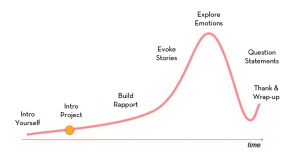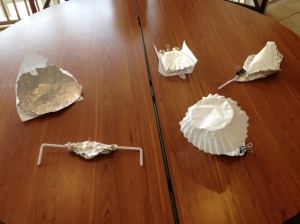Here are several student reflections addressing the importance of empathy in the design process.
Imani writes:
When designing it is crucial that you empathize that way you are creating something that the user will actually use and it becomes something that is helpful. It helps you design based on their needs and their actions. You have to understand their needs in order to design something that will be useful. The article we read, states that the best solutions come out of the best insights on human-behavior. We have to change our mindset and the way we think in order to understand and see something we might not have seen before. By interacting with the user they might tell you something and then by what they said it can help discover/see something that they might not have even recognized. Then later when you create your design and you present it to them again you won’t have to start from square one because you will have already gathered your information and you can move forward instead of going backwards.
Cassie writes:
We can improve our sense of empathy by watching what people do and by trying to think what they think and recognize their behavior. Engaging with people directly reveals a tremendous amount about the way they think and the values they hold.
Ashley writes:
Empathy is important for not just design but for life. How will you know how to fix something without knowing what is wrong with it? If you are looking to create or enhance something, you must know what is bothering the user about it. You purpose in designing to please the user, not only yourself. Improving our sense of empathy can be a simple task. All you have to do is observe and ask people questions. Try to understand why the people feel the way they feel. Personally, it is so easy to me.
Camren write:
Empathy is important in design because in order to create the most intimate product for the user, one must understand the user himself. When empathy is used in the design it allows the designer to be further acquainted with the person he is creating for. Some of the best and most advanced designs are tailored to our everyday needs. We can improve our empathy skills by stepping outside of ourselves and not looking at things from a subjective point of view, although that is easier said than done for most people. We must accomplish this in order to really embody the ability to empathize.





